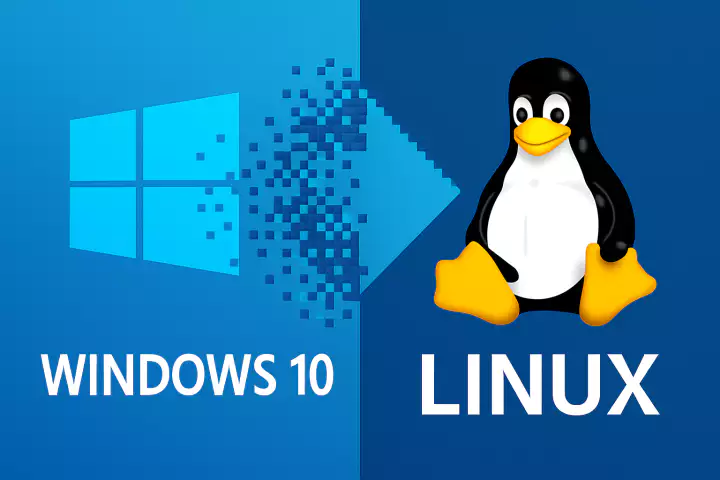
If you’re a typical computer user—checking email, browsing the web, paying bills, and maybe editing a few documents—your Windows 10 PC might be starting to feel… a bit tired. Slow updates, pop-up reminders, and the looming end of Windows 10 support in October 2025 may have you wondering:
“Is it time to switch to something else?”
For many, the answer could be Linux—a free, stable, and secure operating system that has come a long way from its geeky reputation. But is it right for you?
Let’s break it down in plain language.
 Who This Article Is For
Who This Article Is For
-
- You’re middle-aged or older
-
- You use your computer mainly for email, web browsing, YouTube, Zoom, and light office work
-
- You don’t play PC games or use complicated business software
-
- You’re concerned about Windows 10 support ending, but don’t want to buy a new PC
If that’s you, keep reading.
 First, What’s Happening with Windows 10?
First, What’s Happening with Windows 10?
Microsoft will officially end support for Windows 10 on October 14, 2025. That means:
-
- No more security updates (unless you pay for extended support)
-
- Microsoft will encourage you to upgrade to Windows 11
- Some older computers can’t run Windows 11, forcing you to buy a new PC or find an alternative
 What Is Linux, Really?
What Is Linux, Really?
Linux is an operating system, like Windows or macOS. It runs your programs, connects to the internet, and manages files. The big difference? It’s free, open-source, and community-developed.
There are many versions of Linux (called “distributions” or “distros”), but some are designed to feel very much like Windows—so you’ll feel right at home.
 Reasons to Consider Switching to Linux
Reasons to Consider Switching to Linux
1. Keep Using Your Current PC
Linux runs well even on older computers, often making them feel faster than they did on Windows.
2. Stay Safe Online
Linux is less vulnerable to viruses and malware. You won’t need a separate antivirus program.
3. Free and No Annoying Pop-Ups
No license fees. No ads for Microsoft products. No forced reboots for updates.
4. Familiar Look and Feel
Modern Linux distros like Linux Mint or Zorin OS look and work much like Windows. If you can use Windows, you can use Linux.
5. Apps You Already Use Are There
-
- Web browsers: Chrome, Firefox, Edge
-
- Email: Thunderbird, or webmail like Gmail/Outlook
-
- Office: LibreOffice (free Microsoft Office alternative)
- Zoom, Skype, Spotify, YouTube — all work on Linux
 Reasons You Might Not Want to Switch
Reasons You Might Not Want to Switch
-
- You use special Windows software (QuickBooks, custom business apps, certain games)
-
- You rely on technical support from others who only know Windows
-
- You’re uncomfortable trying something new, even if it’s simpler in the long run
In these cases, Linux might still work—but you’d want help setting it up or learning how to use alternatives.
 Try Before You Commit
Try Before You Commit
You don’t have to jump in blind.
You can try Linux without installing it by:
-
- Creating a bootable USB stick (free tools like Rufus)
-
- Running it in Live Mode — lets you explore without making changes to your PC
-
- Or installing it alongside Windows (dual-boot) so you can choose at startup
It’s like test-driving a car — safe, reversible, and free.
 Best Linux Versions for the Average User
Best Linux Versions for the Average User
| Distro | Why It’s Good |
|---|---|
| Linux Mint | Most Windows-like, fast, easy to use |
| Zorin OS | Sleek design, good for beginners |
| Linux Lite | Very lightweight, great for older PCs |
All of them are free, well-supported, and can be installed in under an hour.
 How Hard Is It to Learn?
How Hard Is It to Learn?
If you can:
-
- Use a web browser
-
- Open email
-
- Save files in folders
-
- Install simple programs
…you can learn Linux.
There might be a learning curve (just like going from Windows 7 to Windows 10), but with YouTube tutorials, forums, and help from tech-savvy friends, you’ll be just fine.
 The Bottom Line
The Bottom Line
If you:
-
- Have a PC that won’t run Windows 11
-
- Use your computer for basic, everyday tasks
-
- Want something safe, fast, and free
… then Linux is a realistic, practical option.
You don’t need to be a tech expert. You just need a little curiosity and a willingness to try something new — and your PC might thank you with years of extra life.
